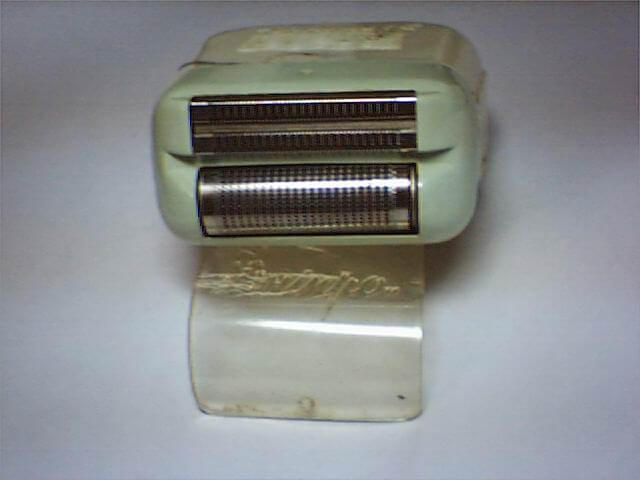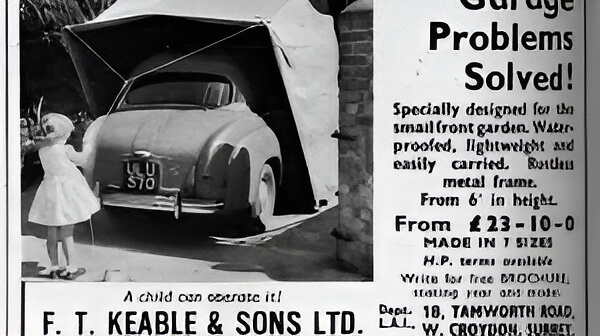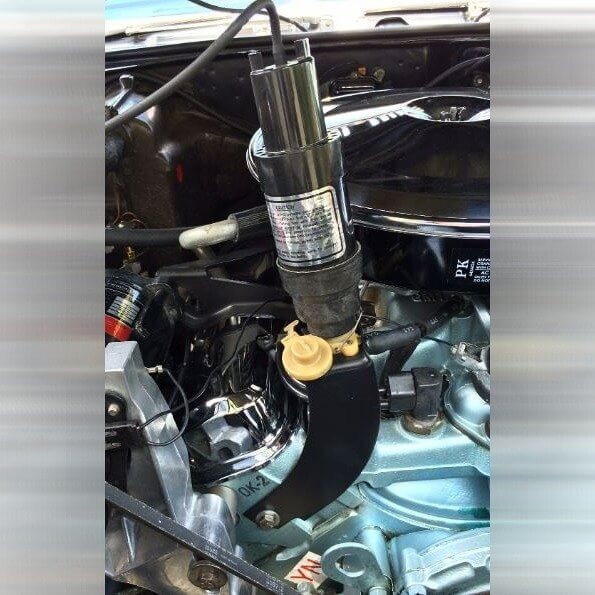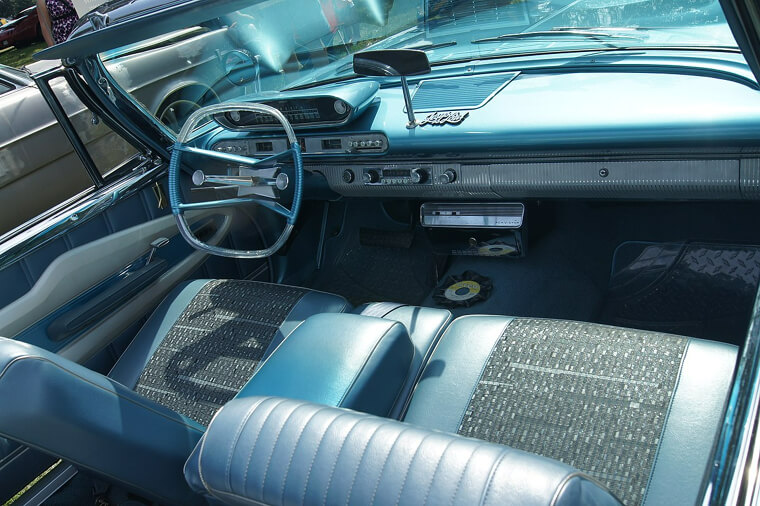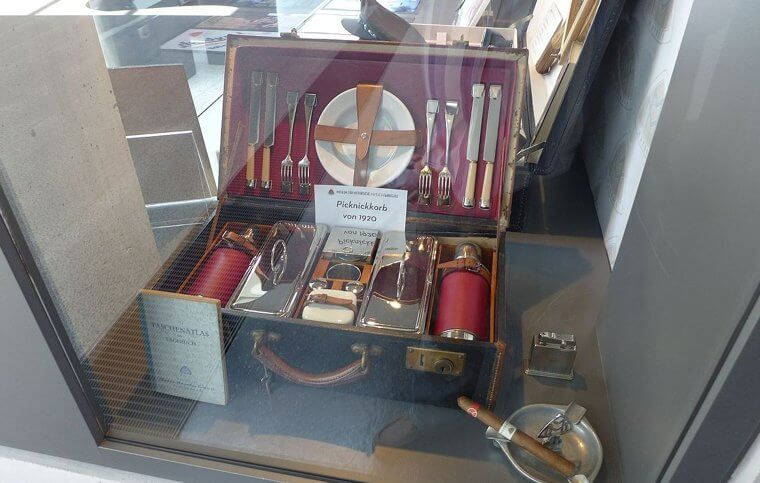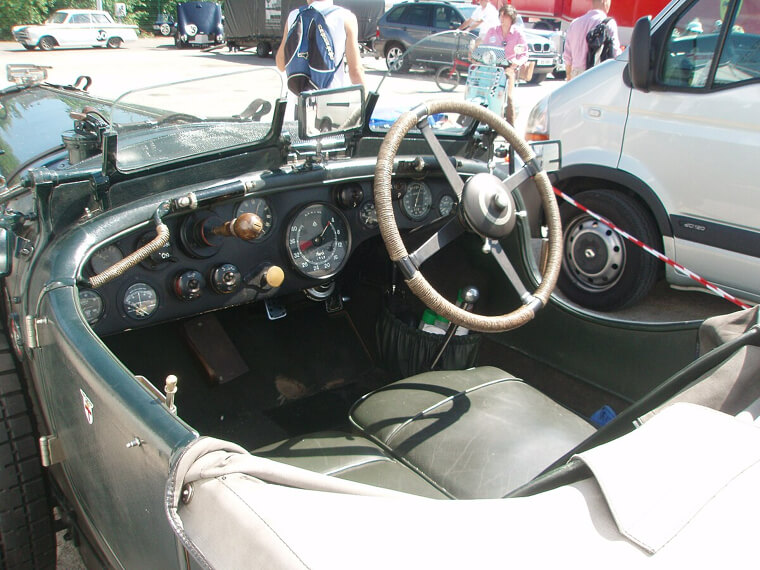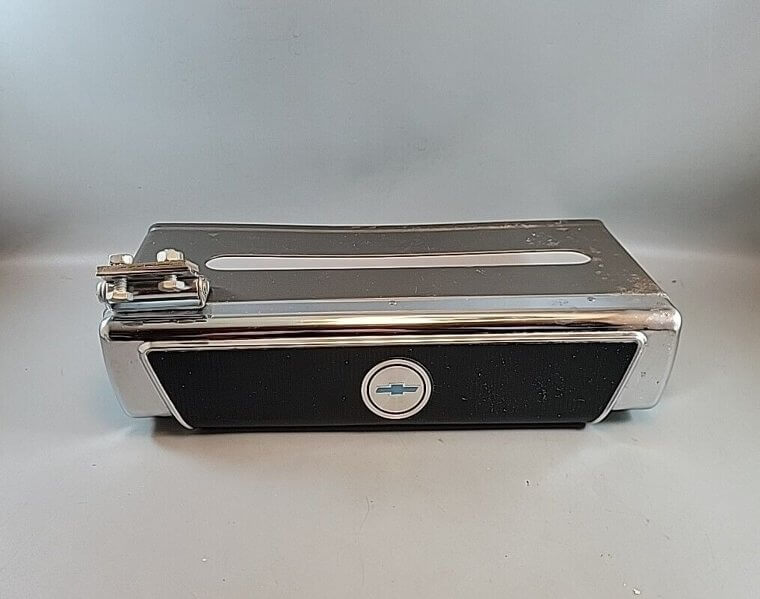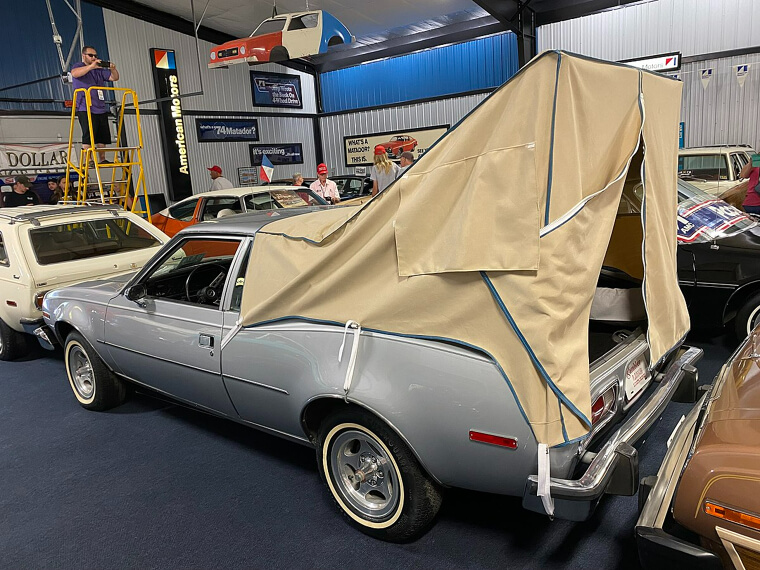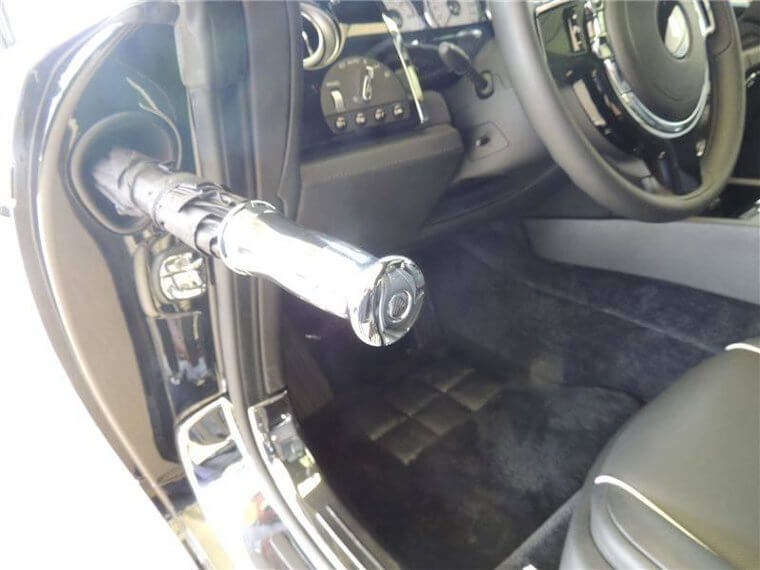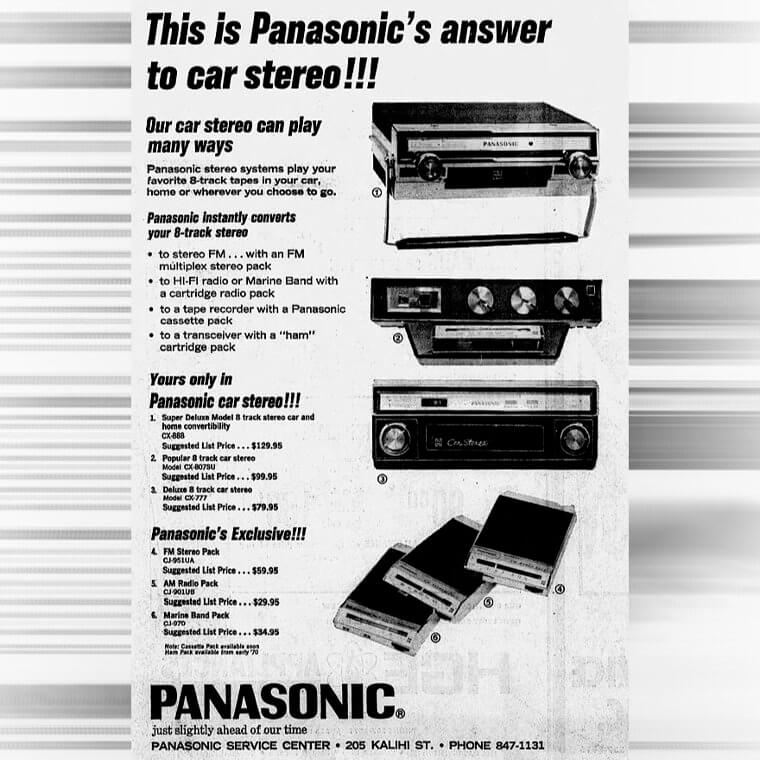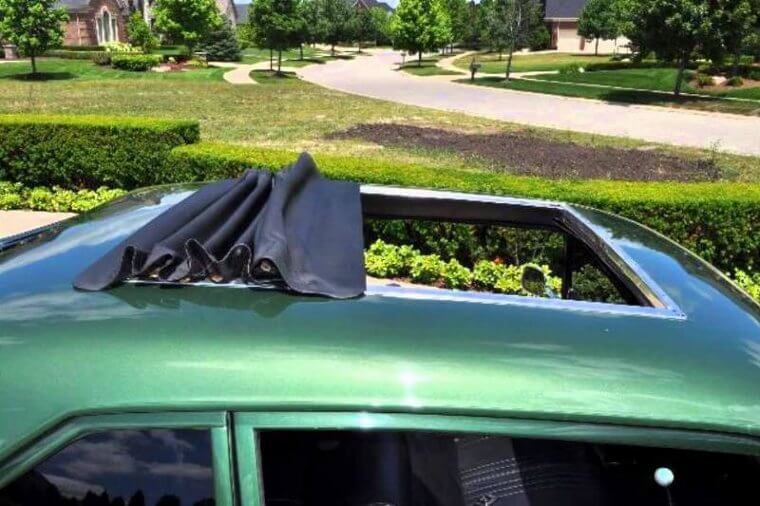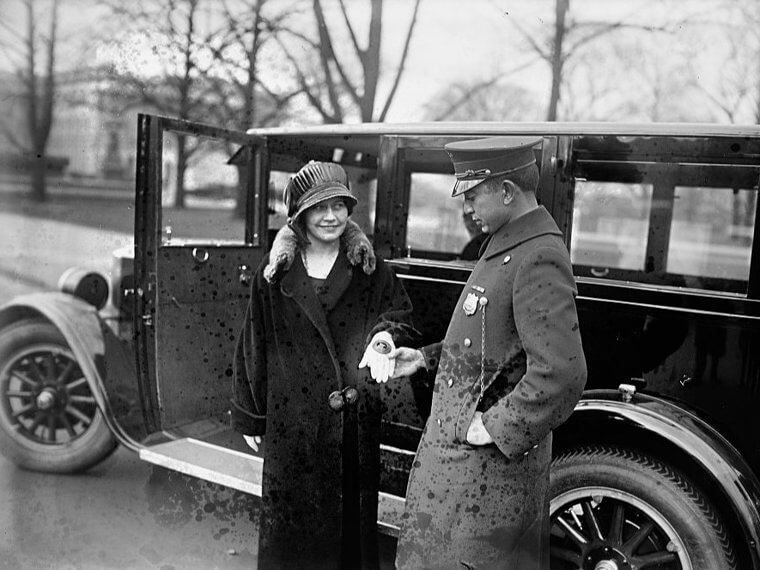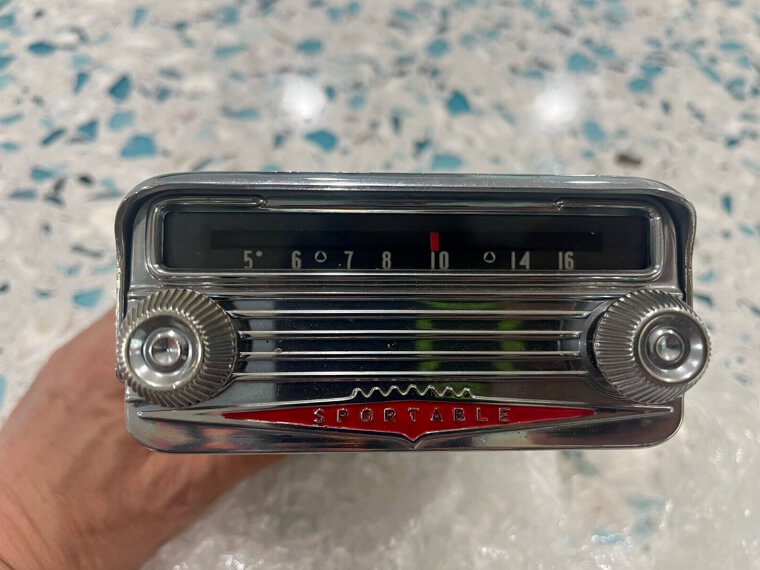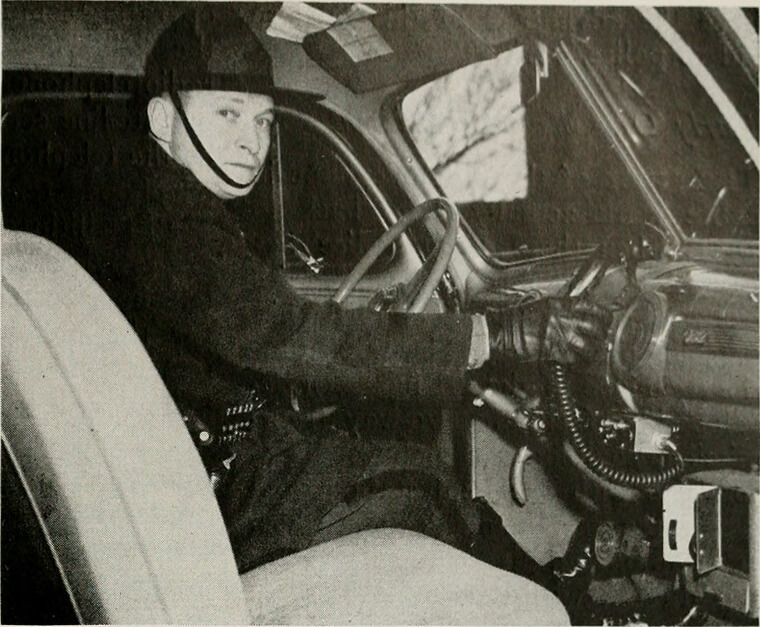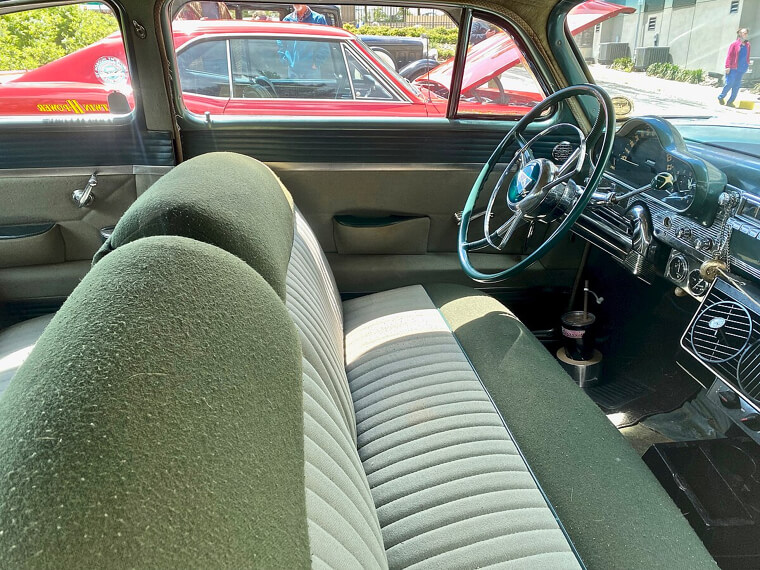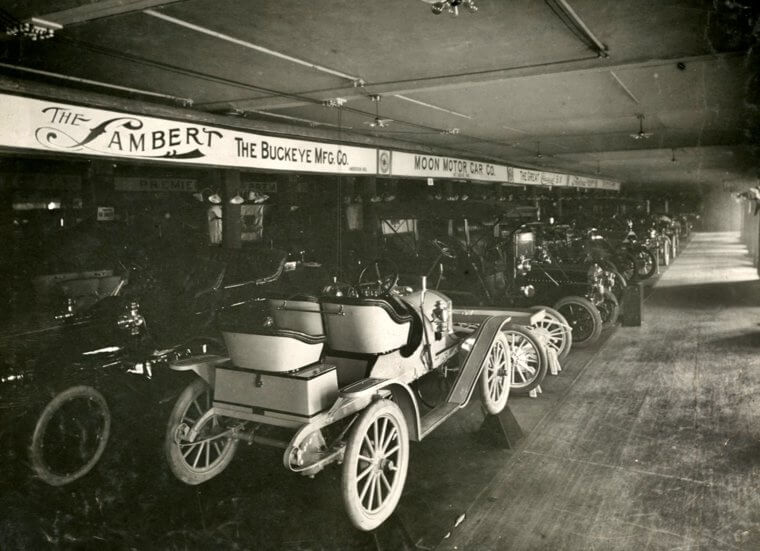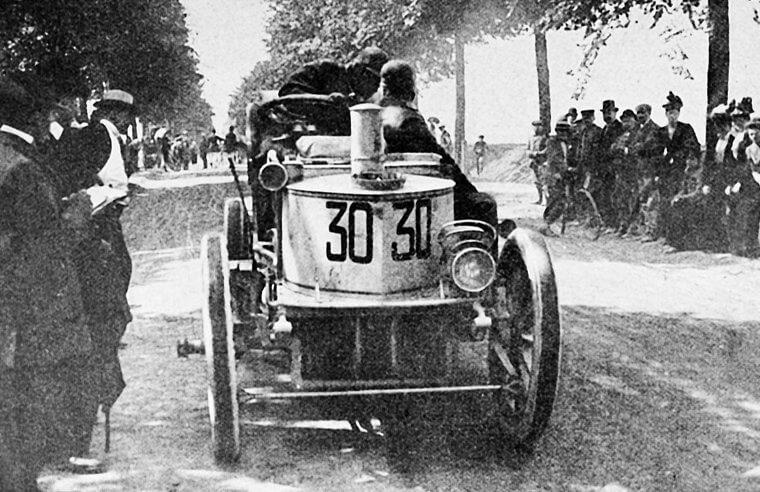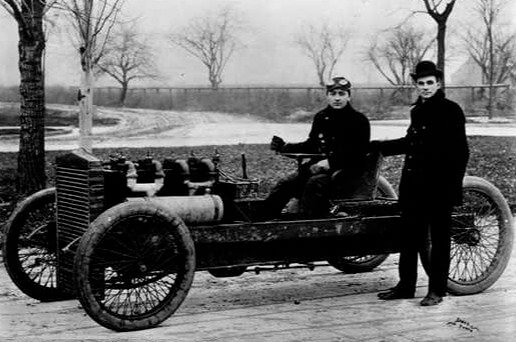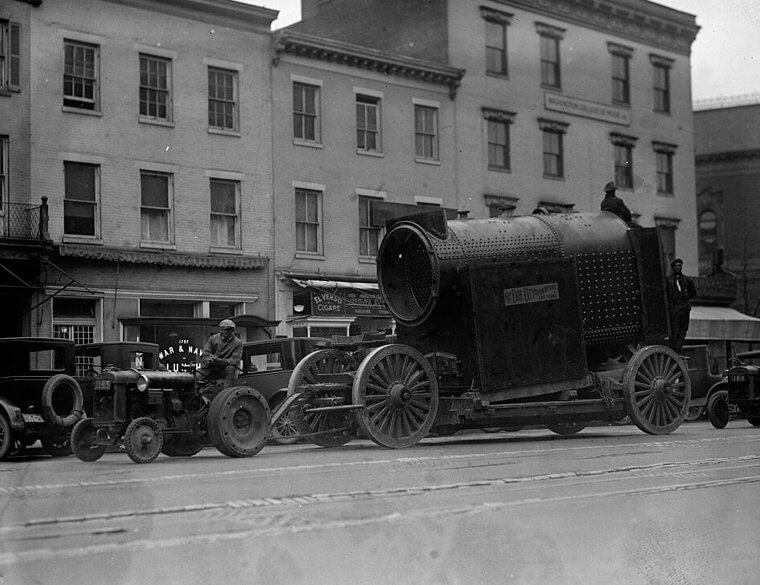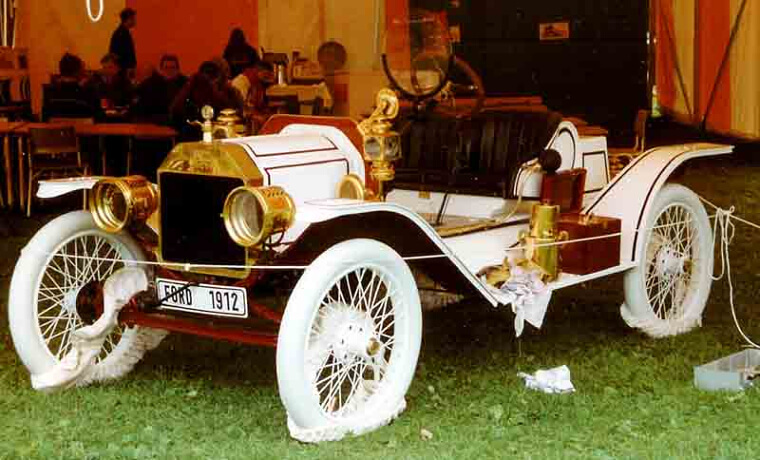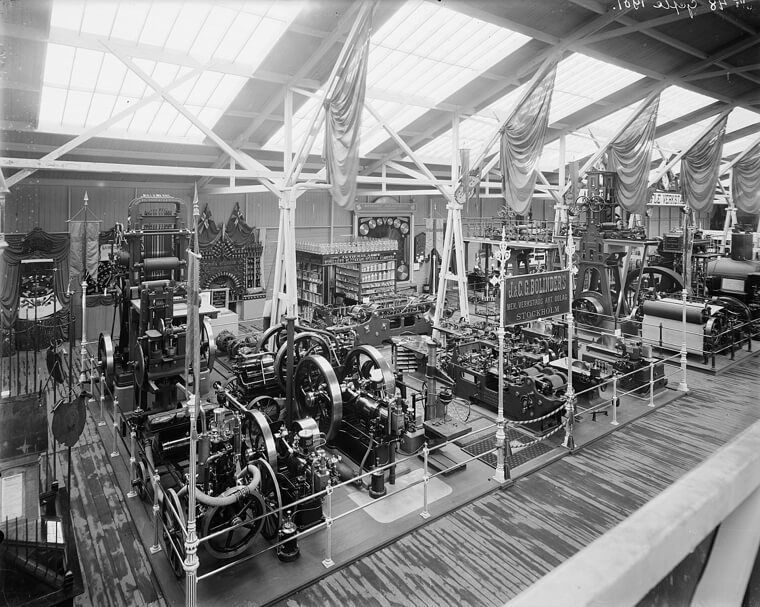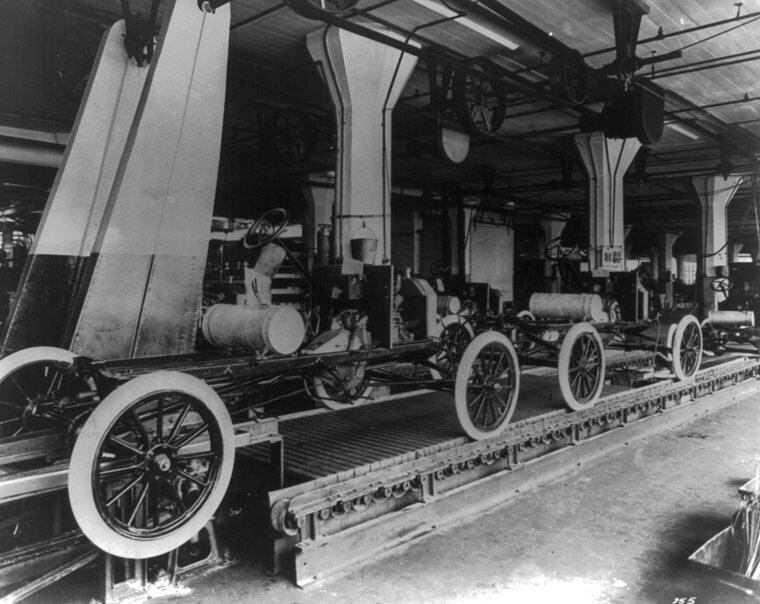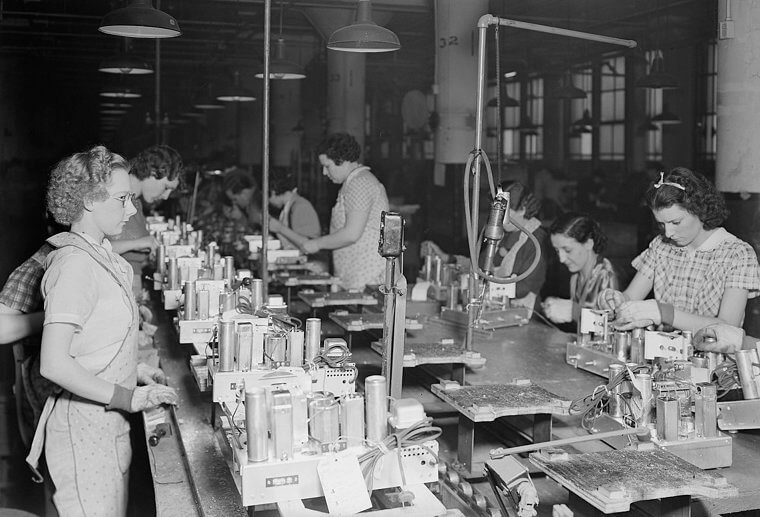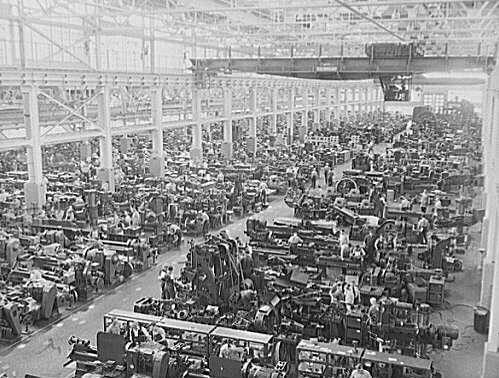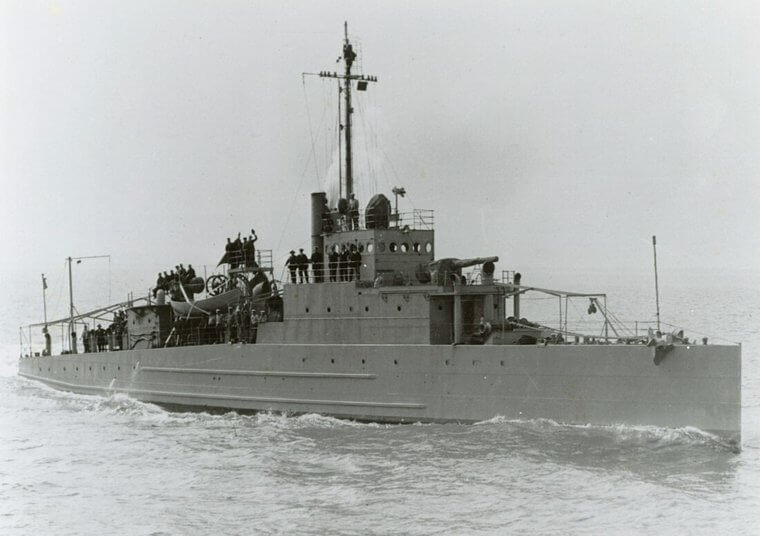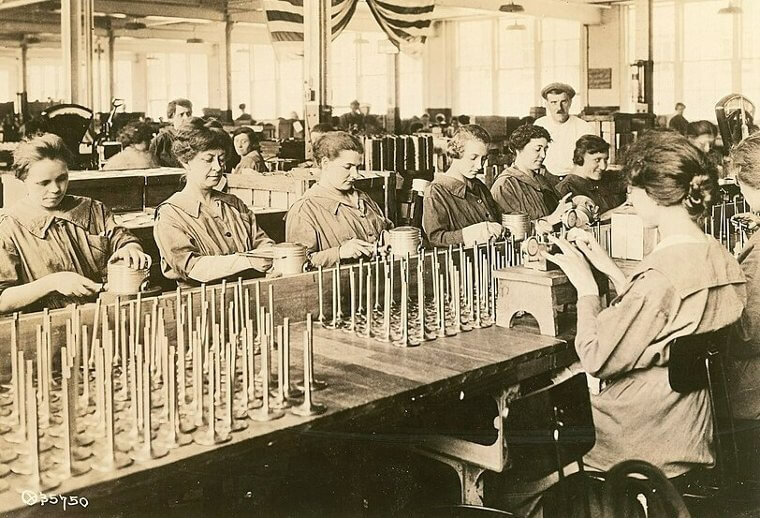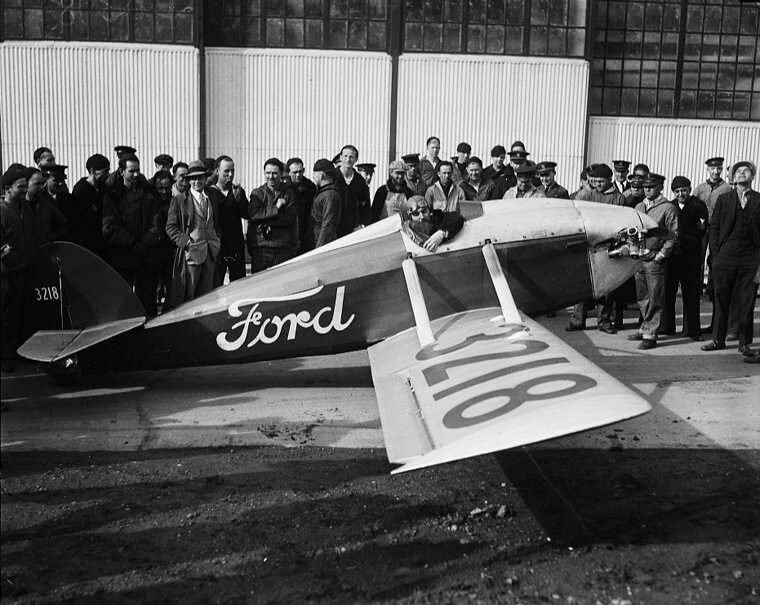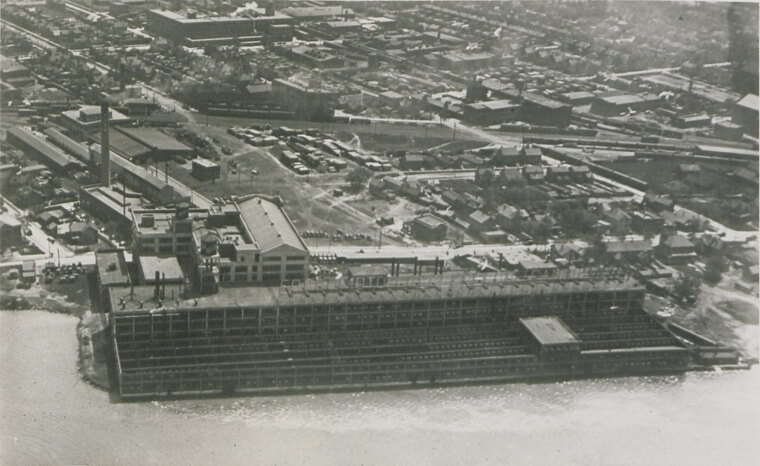Exterior Sun Visors
Sure, most people have sunglasses now, but that doesn't negate the practicality and the safety perks of a sun visor inside the car. It's the perfect way to block off the sunlight that's threatening to affect your vision and your line of sight, and it's something that most people couldn't do without. These sun visors were a little different back in the 1950s and 1960s, though. Back then, they were on the outside of vintage cars.
They didn't come as standard, though. These "awnings" were sold and bought separately by car manufacturers and owners, and were seen as an optional add-on rather than an essential safety feature.
An Electric Shaver in a Pontiac
Have you ever been driving along and thought your beard needed a bit of a shape-up? Or your mustache needed a bit of trimming? Well, many of the Pontiac models sold between he 1950s and the 1960s came with the option of an integrated Remington shaver accessory. All you had to do was plug it into your cigarette lighter and use it as you would any other shaver. You just had to remember to keep your eyes on the road.
The idea was that the Remington shaver would help traveling salesmen keep on top of their appearance while they were driving around the country, but it didn't really catch on.
A Mini Car Table
Let's be honest; people have eaten in their cars for decades, and we show no signs of changing this anytime soon. From drive-thru meals to road trip snacks, eating in your car might not be the peak of safety, but everyone does it. Some vintage cars even came with their very own mini car tables in front of the front seat, which meant you could fold it down and have a solid surface to eat from.
While this vintage car accessory didn't exactly change the world, it did give some drivers the chance to spare their pants of Ketchup and their T-shirts of mustard after a trip through the drive-thru.
A Folding Garage
Let's be honest; a private garage is a luxury and always has been. Some people just don't have the space or the money to buy a house with a ready-built garage or build one themselves, and this was also the case back in the day. That's why the folding garage proved to be so popular during the 1950s and 1960s. It offered car owners the chance to protect their cars without the hassle of having an actual garage.
This invention was designed and created by F.T. Keable & Sons, and it was made to be completely waterproof. Not only that, but it was also sold in numerous sizes to suit all vintage cars.
An Instant-Air Pump
If you've ever bought a vintage car, you may have looked under the hood and been surprised at the strange and unusual things under there. For example, you may have spotted an Instant-Air Pump if you've bought an old Pontiac! This Instant-Air Pump was an intriguing design by the car manufacturer, and the idea was that you could plug this pump into your car and use it to instantly blow anything up.
This was meant to suit people who wanted to pump up bicycle tires, beach balls, air mattresses and more. But they soon realized that the demand for this wasn't too high.
In-Car Record Players
While we now have electronic screens and Spotify apps in our cars, you probably don't need us to tell you that these are relatively new inventions. After all, most of us grew up listening to tapes and CDs - so it might not surprise you to learn that vintage automobiles came with their very own in-car record players. And while this trend became popular in the 1950s, it didn't last very long.
As the record players in these cars were only limited to 45rpm, this meant that the driver had to flip the record over every three minutes or so. And this wasn't the greatest feature in terms of safety.
A Bespoke Car Picnic Basket
During the 1960s, people went for drives for something to do. They'd pack up a picnic, hop in their vintage cars, and drive until they found somewhere they wanted to stop and enjoy. And when car manufacturers realized that this was a popular American pastime, they decided to capitalize on this and make their own car picnic baskets to match the make, the model, and the interior of each specific automobile.
Of course, this didn't come as standard and you had to pay extra for this vintage car accessory - but it was pretty cool, and it might come as a surprise to learn that it was pretty popular.
Extra Dials for the Dash
Back in the day, dashboards were a little different than they are now. Today, dashboards are touch screens that have as many apps and buttons on them as you want - but years ago, that wasn't the case. During the 1950s and 1960s, you had the option to buy extra dials for your dashboard, and this really worked in vintage car owners' favor. After all, vintage cars were built differently.
Many vintage cars would actually break down on a regular basis because they didn't have enough dials to know what was going on in the engine or in the gas tank. By buying more dials, they could.
An In-Car Tissue Dispenser
Have you ever been driving along the road and desperately needed a tissue? While you may spend a few minutes dangerously rifling around the glove compartment to find a spare tissue, things were a lot easier for people with runny noses back in the mid-1970s. That's because major car manufacturers such as Pontiac, Chevrolet, and General Motors decided to sell their very own in-car tissue dispensers as optional car accessories.
These weren't like the cardboard tissue boxes we have today, though. These tissue dispensers were personalized to the make and model of the car, and were often made from metal or other striking materials.
Car Vacuum Cleaners Sold With the Car
If you type "car vacuum cleaner" into Google, it's fair to say that you'll be bombarded with so many different options from so many different retailers. But things worked a little differently back in the day. Instead of making you buy your own separate vacuum cleaner, many car manufacturers would sell a vacuum cleaner alongside the car itself. In fact, it was often included as standard to give everyone the chance to keep their car clean.
This trend was particularly popular back in the 1950s and 1960s, but it seems as though the manufacturers soon realized that this wasn't really making them any money. So, they stopped.
Inflatable Seat Cushions
Before the digital age, salesmen had to travel around the country to sell their products and make a living. This meant that they relied on their cars, not only for transport but also very often for accommodation, too. To make these vintage cars more comfortable, a company called Mosely decided to make some inflatable car seat cushions that could turn the back seats into a bed in no time at all.
What we love about this vintage invention is that things like this still exist, which means that it must have been an impressive and innovative idea at the time. After all, you just needed to plug it into the cigarette lighter and go.
A Hatchback Tent
Hands up if you love to go camping? If you do, you may have even invested in a tent that attaches to your car so you can have transport and accommodation in one handy vehicle. But it turns out that this isn't exactly a new or novel invention, as the hatchback tent actually came first! This invention became popular in the 1970s when Americans truly found the joy in camping - and it made a lot of sense.
The tent simply popped up out of the trunk and allowed couples and families to sleep in their car with some extra space thrown in there, too. And many different car manufacturers got on board with this design.
An Engine Radiator Blind
When the temperatures drop and the weather turns colder, most of us know that our cars will take a little warmer to heat up - even with the thermostatic fans and fuel injections that we have today. So, imagine what it was like back in the day when they didn't have any of these things. They had to come up with different solutions to this problem - and the company Aircon eventually decided to come up with this engine radiator cover.
The aim was to attach the blind to the car during the colder months so that the heat wouldn't escape, but radiate back onto the engine to warm it up. It was pretty clever.
An Umbrella Compartment
There's nothing worse than realizing that you don't have an umbrella when it's pouring it down with rain. And while some people try and keep an umbrella in their car, it's easy for that umbrella to then get misplaced and lost forever. Vintage cars come with a pretty nifty trick for that, though. Many old Rolls Royce cars came with their very own umbrella compartment, so you could keep your umbrella safe.
While this was a great idea in theory, the practicality of this umbrella compartment wasn't quite all there. After all, you had to hurdle over the umbrella to sit in the passenger seat.
An 8-Track Player
What do you want to do when you want to change the volume of the radio in your car? There's a high chance that you either turn the knob on the entertainment console in front of you or you press a button on your steering wheel to ensure maximum driving safety. But what if you had to reach back into the back seat to turn the volume down? Well, that's what people had to do back in the late '60s and early '70s.
General Motors offered this vintage car accessory during this time but didn't realize that putting an 8-track player on the backseat of the car wasn't the best idea. As you can imagine, it didn't last long.
A Vinyl Folding Sunroof
There have always been some cars that just stand out from the rest. These are the cars that everyone wants and the cars that offer so much more than the average automobile. Don't believe us? Just check out the Pontiac Ventura. This manufacturer was one of the first of its kind to take the sunroof and turn it into something so much better- as seen by this foldable vinyl sunroof.
The idea was to create a folded sunroof that was weatherproof while still allowing people the chance to experience the wind in their hair and the sun on their faces. And you don't see many of them around anymore.
Driving Gloves
Watch any old movie, and you'll see people wearing driving gloves when they drive vintage cars. And that's not just because it looks cool and adds to the vintage vibe. That's actually because driving gloves were the norm until the 1970s and most people popped them on every time they jumped in their cars and started their engines. This was largely for steering wheel grip, but they were also used to keep hands warm in cold cars.
Although some people do still like to wear driving gloves, they're not as common as they once were, thanks to advancements in steering wheel grip and integrated car heating systems.
A Pontiac Sportable Radio
During the 1950s, Pontiac really reigned supreme. This car manufacturer not only produced a huge number of cars, but it also came up with all kinds of car accessories that made owning an automobile even better. Like this Sportable transistor AM radio, for example. As well as being fitted to the car itself, this radio also had the ability to be removed from the car and taken outside when needed.
Although the opportunities for picnics and parties on the beach were endless, this vintage car accessory wasn't as popular as Pontiac had hoped it would be. Because of this, it was discontinued after a year.
A Car Radio Telephone
Safety is often a huge factor when it comes to car design changes, which is why many cars offer the likes of Bluetooth and Apple CarPlay to ensure that people can still use their phones while driving safely. These things didn't exist back in the late 1950s, though - and neither did cell phones! That's why it wasn't uncommon for people to have car radio telephones in the car itself.
These car phones became extremely popular, with drivers loving the fact that they could call their friends and family from the road. As safety concerns grew, however, these phones petered out.
A Sit-Rite Back Rest
Nowadays, cars are designed with comfort in mind. That wasn't the case back in the day, though. Many vintage cars were made with hard leather seats that hurt your joints and made your back ache - which is why KL decided to do something about it. They made the Sit-Rite Back Rest, which was designed to alleviate back pain and make driving more comfortable. Especially for longer journeys in the car.
This backrest simply attached to the back of the original car seat and offered comfort with a click. And while the idea was good, the product just didn't seem to catch on.
A Vinyl Covertible Cover
If you've ever ridden in a convertible with the top down, you'll know that feeling the wind in your hair, and the sun in your face will make even grown men smile. But when you turn the engine off and look down at the seats and the floor around you, you soon realize that having the top down is a messy business. In the 1960s, however, General Motors came up with a solution to that problem.
This vintage vinyl convertible cover was designed to cover all exposed areas of the car, including the passenger seat, if needed. With this in place, it would protect the interior from dust, dirt, and sunlight.
The Quadricycle
While Carl Benz is credited for pathing the way for the automobile industry, there's no denying that Henry Ford also played a part. In 1896, he built his very own Quadricycle, which was a makeshift car made with bicycle wheels and a two-cylinder engine. While it didn't look like much, Ford's Quadricycle had the ability to travel at speeds of around 20mph, which was truly impressive at that time in history.
As soon as people saw his Quadricycle, they wanted more. He sold his first invention for $200, and it wasn't long before even more of them were being manufactured for the masses.
The Detroit Automobile Company
Three years after making the famous Quadricycle, Henry Ford knew that he had something big on his hands. So, he decided to open up the Detroit Automobile Company in Michigan - and it wasn't long before he designed another automobile that would change the game. A gasoline-powered delivery truck was released in 1990, and while it had some issues, it was an impressive feat of engineering that shattered the realm of possibility.
Although Henry decided to change the name of the company to the Henry Ford Company in 1901, his partners decided to buy him out of his own venture a year later.
An Impressive Prize
With no company and very little money to his name, Henry Ford didn't really know what to do. He knew that his automobile ideas were going to change the world, but he didn't know how to get back into the manufacturing game. In the end, he decided to enter a race for the Detroit Automobile Club - and while countless drivers entered the race, only two of them managed to make it to the start line without any mechanical issues.
When the one-mile race got going, it was clear for everyone to see that Henry Ford's car was worlds away from his competitors. So, he took home the $1,000 cash prize.
The Beast
Spurred on by his win, Henry Ford decided to try and make his race car even bigger and better than it had been. With the help of fellow automobile enthusiast Tom Cooper, they made the 999, often dubbed 'The Beast.' This car offered a whopping 100 horsepower and a four-cylinder engine, but the construction was pretty basic. It had absolutely no suspension and the steering bar was extremely crude in terms of its construction.
Despite this, The Beast was indeed a beast. Over the next few years, it won countless races, including the Manufacturer's Challenge Cup. It even set a new world record for speed in 1904.
The Ford Motor Company
After winning the race and securing some investment, Henry Ford decided to forge his own company once again. He had people lining up to invest further in the company - including John and Horace Dodge who later went on to start their own company. And while many people assume that the Model T Ford was the first Ford car automobile to make its way out to the masses, it was actually the Model A.
The Model A was released in 1903, and before too long models B, C, F, K, N, R, T, and S were following suit. It was the start of something truly impressive.
Heading to Canada
In 1904, Henry and the Ford Motor Company decided to take their inventions further afield. Although Henry wanted to dominate the worldwide automobile industry, he knew that he had to take small steps at a time. So, the first Ford international factory was built just across the border in Windsor, Ontario. However, Henry wanted to create a distinction between the work he was doing in Detroit and the work that was happening in Canada.
So, he started Ford Canada as a separate entity - and made sure that they used the patent rights from the main company to create their own cars. And in 1904, the Ford Model C (for Canada) was built.
The Famous Logo
The Ford logo is one of the most identifiable car logos out there. It's simple and straight to the point, but it still offers something impressive, all thanks to the beautiful scriptwriting. But what you might not realize about this logo is that a graphic designer didn't just design it as part of their job. Instead, it was designed by Childe Harold Wills, who worked at Ford as the chief engineer and designer.
Childe is also famous for designing the groundbreaking transmission for the iconic Model T, so it's no wonder that he later decided to leave the company and start his own company, Wills Sainte Claire.
An Affordable Design
In the first few years of the 20th century, Ford was doing extremely well for itself. But it was the invention and the distribution of the Model T that truly thrust it into the limelight and showcased the manufacturer as the future of automobiles. This car was sold from 1908 until 1926, and became one of the first, affordable cars that the average person could purchase for themselves. In the first year, over 15,000 were sold.
But what made it so special? Well, the Model T offered speeds of up to 45mph, a 20-horsepower four-cylinder engine, and a stylish look that people just hadn't seen before.
Going to the UK
In 1909, Henry Ford officially settled in the UK. Although the company had been selling cars in the UK since 1903, it formed the Ford Motor Company Limited in 1909- with its first car dealership opening a year later. The idea was to spread the Model T as far as they could, and it should come as no surprise to learn that British road users were impressed with the automobile.
By 1913, it had become the most popular car in Britain, and Ford amped up production overseas. Its new factories could build 21 cars every single hour, and they were being snapped up.
The Assembly Line
What set the Ford Motor Company apart from the competition from the get-go was just how innovative their designs were - even when it came to their production lines. In order to mass produce their cars, they were able to forge a moving assembly line, which allowed them to streamline their build process and build even more cars in a shorter amount of time. The idea was that one worker stayed in the same place along the line, completing the same job over and over.
This completely changed the game for Ford. Pre-assembly line, it would have taken the workers a whopping 12.5 hours to build the Model T Ford. With the assembly line in place, it took just 1.5 hours.
A $5 Work Day
Making the cars quicker also made them more affordable for the average customer. But they weren't the only ones who benefitted. As a result of a more streamlined process, the company was able to implement changes to its workforce, too. For starters, Henry Ford made sure that every single Ford worker was being paid $5 a day - which was significantly more than what other factory workers were earning at the time.
As if that wasn't enough, Henry also reduced the standard 9-hour work day to an 8-hour work day. Before he knew it, he had queues of people lining up to get a job.
The River Rouge Complex
Although things were doing extremely well across the pond, Henry didn't want to forget about his Michigan roots. So, he put in plans to expand his Michigan factory and focus on the Ford River Rouge Complex. It took a whopping 11 years to build, but when it finally opened its doors in 1928 it officially became the largest factory the world had ever seen. In fact, it employed 100,000 people.
Not only that, but the 16 million square feet plot was also divided up into 93 buildings, and it even had its own 100-mile railroad track and boat dock. It had everything they could possibly need.
There Were Trucks, Too
Although it's widely agreed that the Model T thrust the Ford Company into the spotlight, there's no doubt about the fact that Henry Ford knew what he was doing. He wanted his automobiles to be used by the masses - which is why he also commissioned the Ford Model TT truck to be built in 1917. After all, he wanted his truck to be used by delivery drivers across the world.
While his truck idea went down well with customers, they did have their complaints. Due to the weight of the truck, it was a lot slower than the Model T car.
Building Boats
When World War I began in 1914, the world was turned upside down. Sales of automobiles slowed down across the globe, and countries were up in arms. Compelled to help, Henry Ford and his team decided to help out the war efforts by building the Eagle-Class patrol boat at the River Rouge Complex in Michigan, and building more cars, trucks, airplane engines, and even tanks for the military in the United States and the UK.
All in all, they built 42 ships, 4,000 airplane engines, 7,000 tractors, and 38,000 cars and trucks for the brave soldiers who had put their lives on the light to fight the enemy.
Buying Lincoln
Despite putting their sales on hold to build essential military automobiles, the Ford Motor Company was doing better than ever by the time 1922 came around. In fact, it was doing so well that it decided to expand its reach and buy out one of its major competitors, the Lincoln Motor Company. This car manufacturer was founded by Henry and Wilfred Leland, and Henry Ford had an eye on them for a while.
All in all, the Ford Motor Company shelled out $8 million to take over the Lincoln Motor Company, but it was all worth it in the eyes of Henry Ford.
Going Into Airplanes
As well as giving their bank balance a boost, the war efforts also gave the Ford Motor Company some new experience. After manufacturing airplane engines during World War I, the designers and engineers felt as though they were equipped with enough information to branch out into another type of vehicle: airplanes. And in 1925, the very first Ford Trimotor - an airplane with three engines - was built in the U.S.
Overall, almost 200 planes were built and sold to civilian fliers who wanted their very own airplanes. And it's been alleged that only 18 of them remain in circulation today.
Number 15 Million
With things going from strength to strength, the Ford Motor Company was expanding at a rapid rate. And while they were bringing out various new and different vehicles, the Model T was still their most popular automobile. In 1927, in fact, the company celebrated the fact that they had built their fiften-millionth Model T Ford. To commemorate the occasion, it was driven off the assembly line by Henry's son, Edsel Ford.
You can even go and see this car yourself if you want to. It currently sits at the Henry Ford Museum in Michigan - the birthplace of the Ford automobile.
Focusing on A
There comes a time when every good thing must come to an end, and Henry Ford decided to stop producing the Model T Ford in 1927. While he knew that the car had had a good run, he also knew that the automobile landscape was changing and that they needed to make some updates if they wanted to compete with other car manufacturers. So, they decided to spend six months developing and preparing their factories for a new model - the Model A.
Over 5 million Model A's were built from 1927 until 1932, and it was just as popular as its predecessor. It came in many different shapes and sizes, including a convertible, delivery van, two-door coupe, and more.
It's Own Rubber
During the mid-1920s, however, the Ford Motor Company ran into problems when British companies monopolized the rubber industry. It was getting harder and harder for them to source rubber for their vehicles, so Henry Ford decided to approach the Brazilian government with a proposition. He wanted to buy 2.5 million acres of land to grow and expert his own, personal rubber - and they agreed to his request, as long as they got a slice of the pie.
And while this deal continued for a few years, the invention of synthetic rubber in 1945 meant that Henry no longer had a need for so much land - or to give away so much money to the Brazilian government.


